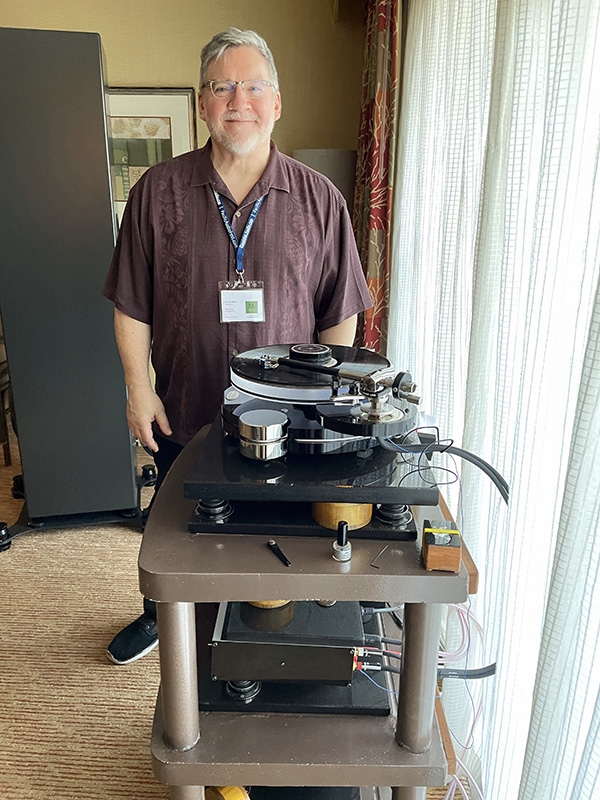| Columns Retired Columns & Blogs |
This is a great analog set.
Origin Live with Soundsmith.


The system's speakers were made by Orem, Utah–based Tekton. The particular model being played was the $5025/pair Moab (below), albeit with a $1800 "Ultimate Crossover Upgrade" which sits in the center of Tekton's Flagship series. The Moab is a 5' 10" tall, 14" wide, and 17" deep tower, each one weighing a not insubstantial 135lbs. The driver complement includes 12" treated pulp-paper cone woofers at the top and bottom, flanking a "proprietary, patent pending 15 dome radiating hybrid MTM high-frequency array", with the drivers being pricey Wavecor TW030WA06 soft-dome tweeters. The 15-cone array consists of two hexagonal arrays of 7 drivers each that function as the midrange and are located just inboard of the woofers, and a single driver located at the center of the front face that serves as a tweeter. On the back side of the speaker are two large ports, strangely located near the center of the cabinet rather than at each end. Another curious thing is that the Moab's large cabinet is a single, open chamber, bereft of any sort of internal divisions or chambers.

The Moab's most obvious characteristic an electrostatic-like speed and clarity from the upper bass through the upper midrange, which corresponds to the range covered most directly by the 7-speaker midrange array. As one would expect, the Moabs had far more bottom end punch and tonal richness than most electrostatics, but lacked the power I'd expect from a pair of 12" woofers in a ported cabinet. A similar situation existed at the high end, where the Moabs were wonderfully sweet and airy, but began to lose a bit of energy and transient clarity as the frequency rose. It remained excellent but didn't match the performance of the midrange. Overall, the Moabs offered ridiculously good performance for a $5000, er, $7000 pair of speaker—not quite "did you forget a zero?" level performance but way more than I'd expect for anything near the price.
The turntable and tonearm in this room were from Origin Live, another manufacturer new to me, and appeared to be a reasonable alternative to other similarly priced turntables. The particular models being used were the $9000 Sovereign V Turntable and $8000 Enterprise Mark IV arm. A SoundSmith SG-210 Strain Gauge Cartridge System ($13,500), and Townshend's Allegri Reference passive preamp ($15,000) completed the front end.
The system was powered by a pair of Atma-Sphere class-D monoblocks. These amps were released in 2022 and a surprising departure for Minnesota-based Atma-Sphere, known for its superb tube electronics. The class-D monoblock is rated at 100W into 8 ohms and 200W into 4 ohms and has single-ended and true balanced inputs. These little cuties are atypical in a couple of respects. The first is their use of a GaNFET based circuit designed and built in-house rather than one of the available class-D modules. The second reason is that these amps are $5500/pair, which strikes me as awfully inexpensive.
I'd love to get my hands on a pair, so perhaps I can convince Stereophile editor, Jim Austin, that we need to review them.

This is a great analog set.
Origin Live with Soundsmith.